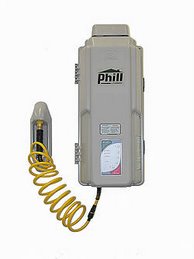One must and probably will do the math before their first replacement of conventional incandescent lamps and compact fluorescent models with LED lighting. Before dismissal out of hand one should be aware of three key technical factoids which MUST be factored into the buying formula (these are not the ONLY factors, but still these three items MUST be remembered and referenced to when buying replacement LED bulbs).
Friday, October 30, 2009
Update - LED lighting
The up front cost of LED replacement equivalent lamps can be somewhat daunting to the uninitiated.
One must and probably will do the math before their first replacement of conventional incandescent lamps and compact fluorescent models with LED lighting. Before dismissal out of hand one should be aware of three key technical factoids which MUST be factored into the buying formula (these are not the ONLY factors, but still these three items MUST be remembered and referenced to when buying replacement LED bulbs).
One must and probably will do the math before their first replacement of conventional incandescent lamps and compact fluorescent models with LED lighting. Before dismissal out of hand one should be aware of three key technical factoids which MUST be factored into the buying formula (these are not the ONLY factors, but still these three items MUST be remembered and referenced to when buying replacement LED bulbs).
1. Lumens not watts are the primary quality of lamp lighting. Lumens are the measured amount of light a lamp emits (in the visible-to-the-eye spectrum of light). One does not replace a 100 watt incandescent light with an equivalent LED light so much as one replaces a 100 watt, 920 Lumen incandescent lamp taking 10 hours to burn 1 kilowatt hour of energy with a 6.4 watt, 900 Lumen LED lamp taking 156 hours to burn 1 kilowatt hour of energy to see by, and so forth. The "color temperature" of the Lumens is also important with "Cool White" and "Warm White" the most common buzz terms to consider depending on where and for what need they are to be used...
2. Watts are burned to make the light one needs for an application for both indoor and outdoor lighting. The reduced LED wattage has a double importance for indoor lighting in that during summer operation one's cooling system does not have to remove near as much waste heat (average .075th of the heat) from LED lights as compared to equivalent incandescent lighting. (Remember from your high school science, that Watts are a measure of heat energy, originally for steam engines and later for electrical generators.). Practically speaking, all lighting energy converts back into heat energy.
Both indoor and outdoor LED lighting applications reduce the amount of non-renewable, greenhouse emissions of one's electrical utility as well; and that will take pressure off of installation of ever more transmission lines to carry ever greater demand for that irreplaceable-never-going-away-electrical-product. In many applications it is actually cost effective to install solar panels on security night light standard poles populated by low battery power consumpting LED's that would otherwise have to have transmission lines run to them in new public locations. Large back yards could benefit from solar powered LED motion activated security lighting; breaking even when one does not have to run building code safe wiring to a new security light system. The criminal sport of stripping copper wiring from municipal light standard poles would be circumvented, as well.
3. LED lighting averages 50,000 hours MLBF "Mean Life Before Failure" which is significantly less than the 8,000 MLBF to replace compact fluorescent lamps (requiring special handling to dispose of these mercury rich appliances) and 1,200 MLBF for the average incandescent lamp. Most municipalities and large business operations have full time paid staff that do nothing but replace lighting during their 8-5 week long shifts with overtime if they get behind. Factor these considerations in when contemplating the "high cost" of replacement of home or business or municipal lighting with ultra-long-life LED lighting, as well.
It has been four plus years and a substantial reduction in our utility bill later since retrofitting to compact fluorescent lighting. We think it is time to step up and replace CFL's and incandescent lighting as they burn out with LED's for even more savings. The average return on investment is less than three years with the next 12 to 15 years MLBF that follow being all gravey. jwr
.
Other LED Links
End.
Subscribe to:
Post Comments (Atom)









No comments:
Post a Comment